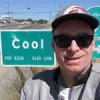-
Posts
25 -
Joined
-
Last visited
Reputation Activity
-
 NormanPCN got a reaction from ryobg in Add "auto" features to adjust/live layers control panels
NormanPCN got a reaction from ryobg in Add "auto" features to adjust/live layers control panels
Photo has toolbar buttons for Auto levels, contrast, color and white balance. These seem to be destructive. I suggest that where applicable you put an auto button, with possible options, into the adjust/live layer control panel to setup the auto setting on the existing controls. This is non destructive and also provides the user ability to tweak the auto settings. For example, Photoshop has an auto button in levels adjustments with many types of auto adjustments one can choose from.
It would seem to me that if it is useful to have a toolbar button for such adjustments then it could be even more useful to have those adjustments be available in non destructive layer(s) that are user tweakable. Some of those four items should fit into currently available adjust/live layers.
-
 NormanPCN got a reaction from xlynx in Text objects convert to pixel objects when importing PSDs
NormanPCN got a reaction from xlynx in Text objects convert to pixel objects when importing PSDs
In Preferences | General there is an option to import PSD text as text or bitmap. On my installation that option is not checked (Text is imported as bitmap). Importing PSD text as bitmap seems to be the default. At least on my installation.
Check your preferences.
-
 NormanPCN got a reaction from Steps in Add "auto" features to adjust/live layers control panels
NormanPCN got a reaction from Steps in Add "auto" features to adjust/live layers control panels
Photo has toolbar buttons for Auto levels, contrast, color and white balance. These seem to be destructive. I suggest that where applicable you put an auto button, with possible options, into the adjust/live layer control panel to setup the auto setting on the existing controls. This is non destructive and also provides the user ability to tweak the auto settings. For example, Photoshop has an auto button in levels adjustments with many types of auto adjustments one can choose from.
It would seem to me that if it is useful to have a toolbar button for such adjustments then it could be even more useful to have those adjustments be available in non destructive layer(s) that are user tweakable. Some of those four items should fit into currently available adjust/live layers.
-
 NormanPCN reacted to jorismak in [AP Beta 1.5.2.66] - RAW conversions
NormanPCN reacted to jorismak in [AP Beta 1.5.2.66] - RAW conversions
It means that the output C1 and ACR create are most often not at all what your camera would create if it was set to jpeg. C1 and ACR don't try to clone the look of your camera, they develop the raw how they think it should be developed, and that means it can look different.
Most notably, C1 uses a film-like curve by default that gives the images some extra 'pop' from the get-go, and ACR also has a tone-curve applied that is more meant to normalize the output of all the sensors out there, so they all come out pretty similar in response. In other words, ACR (in 2012+ mode any way) applies a tone curve and leaves the output to be 'neutral'.
Both the C1 and ACR method give lower contrast around the levels of well-exposed skintones (let's say around 55% to 65% IRE) why they often seem 'brighter' in the mids.
That all being said, AP does little to nothing to make the images 'pleasing' with default values. It's rather bare-bones and straight shooting in the RAW development -> does little to the data so you can tweak it any way you want to. Yes, that means you might have to apply a curve that has a slight s-curve to it. This will will make the image pop a bit more and boost anything from 50% and higher, giving you the brightness in the mids you seem lacking.
And if the curve is applied in luminance-only mode (something like LAB mode) that means your brightness increases and gives pop, but the color intensities stay the same. I'm betting that if you brighten that image you see the colors don't seem so saturated anymore. Since they're darker, you see more of the color. If you add white (make it brighter) the color seems less intense.
So, you're absolutely right in what you see, but I don't think it's viewed as 'an issue', just a different output by default. And like I said, AP does way less to your files 'by default' then other programs like C1 and ACR do. ACR does a lot to your file that you can't turn off :).
Maybe the other way of viewing things is like this: There is no 'one correct way' of developing the RAW data, only multiple ways to do it, and you can choose which you find more pleasing or takes the less work to get to a pleasing result. Most often photographers want the RAW converter to match the camera's JPEG output by default (Since that is what they saw on the display when they took the picture :)) but like I said, there is no one 'correct' way. Your camera is just one way to deal with the sensor data, programs do other stuff with it.
Did you ever took a look at the (Free / opensource) Rawtherapee? It gives you _all_ the options. There are like 6 options to set brightness+contrast in there. Normal programs pick one, but there are multiple ways to do things.
-
 NormanPCN reacted to dmstraker in 'Luminosity mask' selection macros
NormanPCN reacted to dmstraker in 'Luminosity mask' selection macros
Following on from a previous post, I've created three sets of macros for selecting a part of an image based on five Blend Ranges 'luminosity' curves (nominally called Blacks, Shadows, Mid-tones, Highlights and Whites).
You can download the zip file here (the forum doesn't seem to like zip files, so I put it on my website).
A few points of note (more in the included .pdf file):
The 'Preview' set just cuts out the selection so you can see exactly what is being selected. It also lets you inspect the Blend Ranges curves. The 'Select' set turns this into a selection in the image. The 'Blend' set does the same for adjustments and filters. Curve overlaps are deliberately symmetrical so together they should sum to 100%. All sets include all contiguous combinations, such as 'Blacks+Shadows'.
-
 NormanPCN got a reaction from Fixx in Add "auto" features to adjust/live layers control panels
NormanPCN got a reaction from Fixx in Add "auto" features to adjust/live layers control panels
Photo has toolbar buttons for Auto levels, contrast, color and white balance. These seem to be destructive. I suggest that where applicable you put an auto button, with possible options, into the adjust/live layer control panel to setup the auto setting on the existing controls. This is non destructive and also provides the user ability to tweak the auto settings. For example, Photoshop has an auto button in levels adjustments with many types of auto adjustments one can choose from.
It would seem to me that if it is useful to have a toolbar button for such adjustments then it could be even more useful to have those adjustments be available in non destructive layer(s) that are user tweakable. Some of those four items should fit into currently available adjust/live layers.
-
 NormanPCN got a reaction from Ruhell in [APh] Zoom to Fit
NormanPCN got a reaction from Ruhell in [APh] Zoom to Fit
It would be very nice if Zoom to fit actually used all the available space. Right now it leaves a very large border around the image to the edges of the workspace. Maybe a preference. Zoom to fit with no border.
-
 NormanPCN reacted to lenmerkel in cr2 RAW files and .xmp files
NormanPCN reacted to lenmerkel in cr2 RAW files and .xmp files
Ah, I see. I also noticed from your later post you're a Pentax user. Me too! Still shooting with a K10D (and saving to DNG).
I personally prefer to save sidecar files rather than write to the DNG (faster saving of changes, as Ablichter pointed out, is one reason). The main rationale though is that I use DxO Optics Pro for raw development, and it writes out its own sidecar files with raw development settings, in DxO's proprietary format. There's no easy way to embed that in a DNG, so sidecars are the only option.
My DAM tool takes care of syncing other metadata with the DNG (i.e. XMP, EXIF, IPTC) when I choose to do so, but not raw development settings. It also takes care of managing my raw files with their sidecars as "units".
Be aware that the raw development data that Adobe Camera Raw writes to your DNGs is written as embedded XMP data, in a namespace specific to Camera Raw, not surprisingly called the "Camera Raw Namespace". What this means is that the raw development data is proprietary to Adobe, and is completely specific to Adobe products (Camera RAW, Photoshop, and possibly Lightroom). It has no meaning to other raw processing software, because every raw processing software applies its own unique algorithms, settings, etc. The data are not transposable between softwares.
Consequently, for Affinity Photo (or any other raw processing software, like DxO Optics Pro, AfterShot Pro, Capture 1, etc) to write its raw development settings to your DNGs, the Adobe Camera Raw namespace is useless, and the developers would need to define their own custom XMP namespace to hold values that make sense to their software. I can't imagine it would be worth their while to do so. There is no "universal" way to describe raw development settings, as their is no "universal" raw processing software. Thank heavens, or we'd all be stuck with a choice of 1 raw workflow. :o
Your workflow of requiring to store raw development data in your DNGs limits you to using Camera Raw for raw development, I'm afraid.
Len
-
 NormanPCN got a reaction from PaulAffinity in Memory leaks!
NormanPCN got a reaction from PaulAffinity in Memory leaks!
My machine has 16GB ram. AP allowed to use 11GB. .37 beta.
Start Affinity photo
Open a 5 shot HDR merge, with tone map
click Apply once this is done
close the document.
repeat
On the third time Photo goes virtual and of course performance goes WAY down. The memory leak is about 3.5-4GB. Yes GB.
Interesting that AP wants ~4GB of ram to do this operation. Photomatix only wants about 70MB and is tons faster. Hey it takes time to touch that much ram repeatedly.
edit: PS goes about 1.8GB.
Develop also has big memory leaks.
Start AP
Open recent Canon 7D2 CR2 file.
Develop
Close document
repeat
I did not repeat until AP went virtual. I repeated about 8 times and watched memory get to about 1.8GB from a start around 200MB. It may be 20+ times. Much smaller memory consumption and thus the leak is smaller.
Finally just opening a TIF and closing still shows memory leaks. Again a smaller leak than the above because memory consumption is smaller in this operation.
I thought On1 Photo was a memory pig with memory leaks.
Keeping track of memory. Programming 101 guys. Get a grip.
-
 NormanPCN got a reaction from brianandcamera in portrait image opened in landscape orientation
NormanPCN got a reaction from brianandcamera in portrait image opened in landscape orientation
I tried opening a Canon 20D JPEG file which is in portrait orientation and Afinity opened it in landscape orientation. It seems the EXIF orientation flag is not correctly read at least in some circumstances. Windows explorer, viewer, Adobe and On1 are all good with the file.
-Norman



